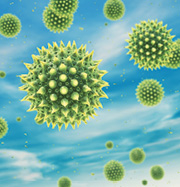
We have all heard the old saying, that everyone complains about the weather, but no one does anything about it. The truth is , however, that we have been doing something about the weather for centuries. We have been making it worse. But if that is the case, how are we doing it, and how can we change our ways to improve our weather? We are just beginning to understand how land management affects weather, and a few folks are using this knowledge to “do something about it”!
One of these folks is regenerative rancher, Alejandro Carillo, who ranches in the harsh, brittle environment of the Mexican Chihuahuan desert. For years his neighbors have claimed that the better grass production on his ranch was because he was “just lucky”, and it happened to rain more on his place than theirs. However, now it is becoming increasingly apparent that it DOES rain more on Alejandro’s ranch, and that it isn’t just luck; it is because he manages his land differently than his neighbors, and his grazing management is actually causing an increase in his local rainfall. This can easily be verified by
A webinar recently discussed climate trends in Kansas. It appears that the wettest area of Kansas (southeast Kansas) has been getting wetter, gaining about 2 inches of precipitation over the last few decades. The driest part of Kansas (southwest Kansas) has been getting drier, losing an inch or two of annual precipitation. Not good, but it gets even worse. Statistical analysis indicates that rainfall events are indeed becoming what many of us have suspected: less frequent and more intense. But the bigger questions are #1) why is this happening, and #2) what can we do about it?
The first inclination is to blame these changes on climate change… which is being blamed on increased levels of atmospheric carbon dioxide. Is it truly that simple? Are these changes due to the near doubling in atmospheric CO2 that have occurred since the beginning of the Industrial Age? Or is there something else going on? There is increasing evidence that it is indeed much more complicated, and that our land management is a major factor. The dramatic rise in atmospheric CO2 is likely a contributing factor but it may not be the biggest one. According to internationally recognized climate scientist, Walter Jehne, the biggest driver of climate change may not be CO2 but rather changes in our water cycle. Water has a very high specific heat, which is a measure of its resistance to temperature change. That is why deserts can be blazing hot in the day and quite cold at night, and why the dry centers of continents experience wider swings in temperature than coastal areas.
The evaporation of water from soil and the transpiration of water vapor from plants cool the soil and the surrounding environment. Any management change that results in less water being captured and held will result in localized heating. Bare soil and tillage result in less water infiltration, lower water holding capacity, and no cooling transpiration from vegetation. Growing green plants and abundant surface residue keep the soil surface and air above it cool. Now extrapolate that local effect over millions of contiguous acres and you get a “heat dome” of rising hot air that tends to move bodies of moisture laden air away from hot, dry areas that desperately need the rain. When we use soil health practices, we can increase rainfall infiltration, hold soil moisture longer, transpire more moisture, and if these practices occur at scale, it will help eliminate the heat domes that contribute to both short and long term drought.

Large areas of bare soil also have other influences on rainfall and climate. For example, remember when we were taught in school that there was a speck of dust in the center of every raindrop? It is true that pure water in the form of water vapor will not form a raindrop without a “condensation nuclei” to which the water is magnetically attracted. But it turns out that dust that blows up into the atmosphere from large areas of bare, tilled soil are not very effective condensation nuclei. It takes a huge amount of water vapor to form a rain event when the primary condensation nuclei are soil particles, and thus it takes a long time for enough moisture to accumulate to make it rain (thus rain becomes infrequent) and there is a lot of moisture in the atmosphere when it does rain (thus rain becomes more intense).


Biological condensation nuclei like pollen grains (left) and bacteria (right) are extremely effective at promoting gentle and frequent rains. Perennials, cover crops, pollinator strips, crop residues, and diverse crop rotations are all ways to increase the level of biological nuclei in your environment.
Effective condensation nuclei, that are highly attractive to water vapor promote frequent, gentle rain are all biological in origin. Examples include bacteria (like Pseudomonas syringae) which commonly live on the surface of plant leaves, pollen grains from flowering plants, fungal spores from decaying plant residue, and volatile organic compounds emitted by the leaves of growing plants. When we minimize tillage and keep land surfaces covered with decaying plant residue and green plants (especially flowering plants), we can encourage frequent and gentle rain. While this seems to be a complete revelation to us in agronomy, ski slopes have been using bacteria to help make artificial snow for decades. In the 1970’s David Sands, a plant pathologist at the University of Montana, found that fungal spores triggered rain in that location. Dr. Brent Christner of Louisiana State University found similar evidence of bacteria inducing rainfall, which was the subject of an article in the January 2009 issue of National Geographic.
There are also other mechanisms by which land management affects weather. One is called the “green pump” in which trees brings up stored soil moisture and slowly puts it into the atmosphere through transpiration, where it condenses into clouds and drops rain again. This phenomenon was first observed on Pacific islands where the trees were removed and then the rainfall stopped occurring inland and was only limited to the coasts. Another mechanism is called the “short water” cycle, in which local rainfall occurs through the movement of water vapor vertically into the air and it hits a cool layer in the upper atmosphere and falls again as localized thunderstorms (as opposed to the movement of large warm, moisture laden air masses colliding with large cold air masses to form a front with gentle rain over a large area).

When it rains on large areas of bare soil, the moisture evaporates quickly, leading to high chances of another rain. When the soil is covered in vegetation, little moisture is lost to evaporation; instead, it is slowly released through transpiration. Thus, bare soil again contributes to a cycle of long periods with no rain, followed by periods of intense rain while covered soil contributes to more frequent and gentle rains that are well distributed over time.
When large blocks of land are managed with regenerative practices that maintain soil cover and have growing plants, such as no-till, cover crops and, managed grazing, the region likely will experience an increase in the frequency of local rainfall. Although this is a hard topic on which to conduct controlled research, both scientists and producers believe they are witnessing this phenomenon
Ranchers in arid areas, like Alejandro Carillo, have seen such an increase in local rainfall following their adoption of adaptive, multi-paddock grazing with long rests. This grazing method causes an increase in grass production, which improves the amount of mulch available, which improves the infiltration of rainfall and slows the evaporation of soil moisture, so there is more soil moisture stored with each rain, which “primes” the system. The taller grass remnants left after each managed grazing period and the long rest periods between grazing increases the amount of photosynthesis, which increases root exudates that build soil organic matter. This, in turn, allows the soil to hold more moisture, rather than letting it percolate away and the regrowth of the plants will have a slow transpiration of this stored soil moisture which contributes to increased local rainfall events. Regenerative practices like no-till, cover crops and especially improved grazing management is how we stop and reverse desertification. Knowing this gives you the ability to not merely complain about the weather… now you can do something about it!
For more information and a deeper dive into this topic check out these resources:
Understanding Ag’s webinar Greening The Desert (Search YouTube for “Greening the Desert Alejandro Carrillo”)
Walter Jehne’s excellent presentations on the water cycle (Search YouTube for “Walter Jehne”)
Allan Savory’s famous Ted Talk on Desertification (Search YouTube for “Allan Savory Ted Talk”)
This article first appeared in the 8th Edition of Green Cover's Soil Health Resource Guide.
Also check out the 10th edition, our latest Soil Health Resource Guide, over 90 pages packed with scientific articles and fascinating stories from soil health experts, researchers, farmers, innovators, and more! All as our complimentary gift to you, a fellow soil health enthusiast!